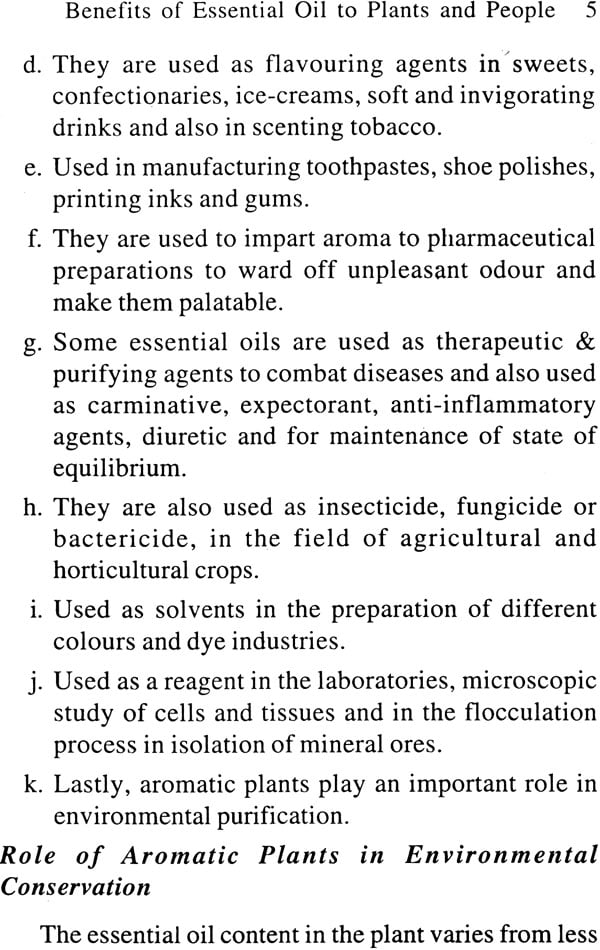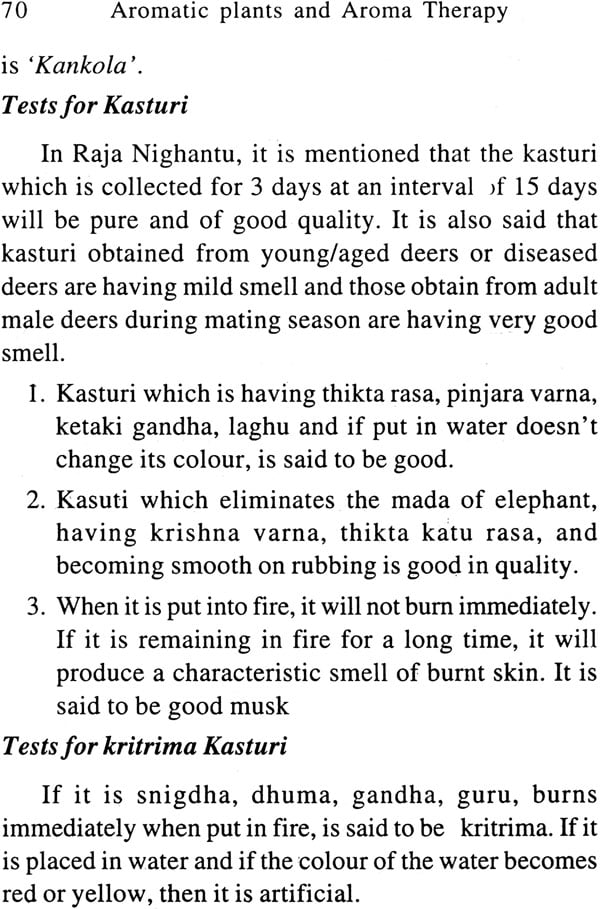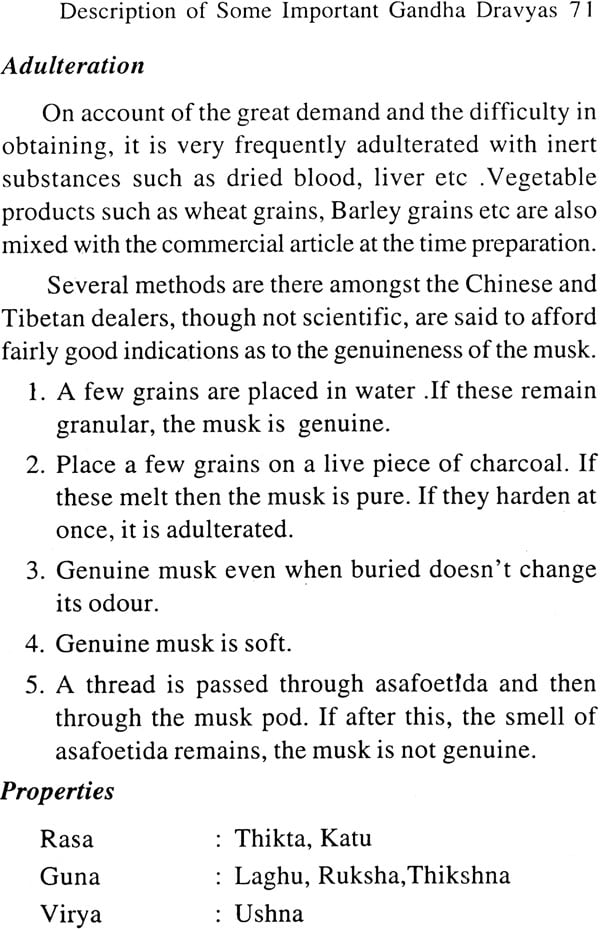
Aromatic Plants and Aroma Therapy
Book Specification
| Item Code: | NAN332 |
| Author: | Dr. Nitin Ujjaliya |
| Publisher: | Chaukhambha Publications |
| Language: | English |
| Edition: | 2016 |
| ISBN: | 9789381608692 |
| Pages: | 74 |
| Cover: | Paperback |
| Other Details | 7.0 inch X 4.5 inch |
| Weight | 60 gm |
Book Description
India is a veritable emporium of essential oil bearing plants. It is one of the few countries in the world where aromatic plants of all types can be cultivated in one or the other areas of the country because of the vast areas and the climatic conditions varying from the torrid to frigid zones, embracing various tracts of tropical and temperate plains, hills, valleys, irrigated soils, moist and dry climates. The important aspects of essential oil is aromatherapy which holds a significant area in the world of alternative medicines. ‘Aromatherapy’ is based on treatment with essential oils and is suited to the treatment of diseases of brain and nervous disorders.
I am happy to present this small work in the form of book. It is the outcome of knowledge compiled through seminars and work of colleagues during post graduation.
Aromatic plants have been described in Ayurveda as Gandha dravya and being used for treating diseases since time immemorial. These dravyas specially used in the ailments of Vata and Pitta. Manas raga can be easily treated by them. Aroma therapy is a developing specialty and gaining popularity among population due to its pleasant way of treatment and no harms. In this way of treatment some time patient need not to take medicine; only external therapy found enough to cure diseases.
From the soul of heart, I am thank full to my teachers Dr. Debashish panda, Dr. Sangamitra dash, Dr. R. Remadevi, Dr. Sumit srivastav, Dr. N.D. Vashishtha, Dr. Madhu, Dr. Prakash Mangalaserry, Dr. Harivenkatesh, Dr. Hariom gupta; who lighted the lantern of clinical Ayurveda and specially writing on the topics of Ayurveda.
I express my sincere thanks to my seniors and colleagues of Vaidyaratnam P.S. Varier Ayurveda College, Kottakkal namely Dr. Dhanya, Dr. Vandana, Dr. Neetu shree, Dr. Sachin, Dr. Kiran, Dr. Divya, Dr. Adavesh, Dr. Tushar, for their role in the making of this book and overall coordination.
It is too difficult to make such efforts without unlimited support and encouragement from the family. My parents, brother and sisters, wife Meenu and daughter Nivedita have been driving force to bring out this book.
I thank everyone for all encouragements extended to me for publishing this small compilation work.
India is a veritable emporium of essential oil bearing plants. It is one of the few countries in the world where aromatic plants of all types can be cultivated in one or the other areas of the country because of the vast areas and the climatic conditions varying from the torrid to frigid zones, embracing various tracts of tropical and temperate plains, hills, valleys, irrigated soils, moist and dry climates. Perfumery has been one of the Indian arts and our country was a famous centre for perfumes and allied products in the past. We have considerable potential for the development of an industry based on essential oils. The majority of the natural perfumery materials are obtained from scented parts of the plants. There is possibility of creating and developing new essential oils for the world market based on our botanical species. World trade in essential oils continue to increase every year in spite of the introduction and increased consumption of synthetics. The essential oils are used for flavour or perfume and also in a wide variety of finished products from soap to custard, lipstick to carbonated beverages; pharmaceutical specialities to toilet papers and so on. There are opportunities to produce new products of interest to both flavour and fragrance industries by cultivation of novel plant species.
Cultivation of this 'group .of plants will help in diversifying our agriculture for new cash crop. Importance of cultivating essential oil bearing plants has now being realized by the government and land owners and it is hoped that India would be a major contributor to the essential oil trade in the international market.
The organization of plant tissues is very complex. The vegetal world produces food for their own nourishment and growth and chemicals as protective devices in various forms such as cutine, suberine mucilage, lignin, silica, oil glands etc. They also manufacture a number of secretions and excretions of diverse chemical nature and fractions. In many cases these materials are of great value to man and plant itself e.g. essential oils, pigments, tannins, resins, latex, wax, alkaloids, etc.'
The essential oils or aromatic oils are steam volatile, odoriferous substances, mainly composed of terpenoids. The steam volatilization distinguishes them from other fatty oils. These are the intermediate or final metabolic products and found in glands and special secretor cells. In some cases the entire plant produces essential oil while in certain cases only a particular part such as leaves (Eucalyptus), flower (Rose), fruit's peel (Orange), bark (Cinnamon), modified stem (Ginger), wood (Sandal) or seeds (Cardamom) produce essential oil. The importance of these essential oils is obscure as they help in process of pollination by attracting insects or safeguard plants from browsing, while to man the significance is quite well known for industries and trade as well as for medicine.
Contents
| 1 | Introduction | 1-3 |
| 2 | Benefits of Essentials Oils to Plants and People | 4-16 |
| 3 | Classification of Gandha Dravyas | 17-18 |
| 4 | Description of Some Important Gandha Dravyas | 19-72 |
| Karpura | 19 | |
| Chandana | 25 | |
| Devadaru | 32 | |
| Ela | 36 | |
| Vacha | 40 | |
| Lavanga | 45 | |
| Kethaki | 50 | |
| Jatiphala | 54 | |
| Useera | 59 | |
| Kasturi | 65 | |
| 5 | Conclusion | 73-74 |









